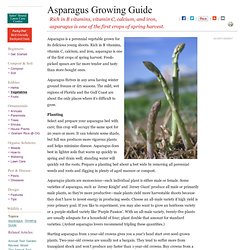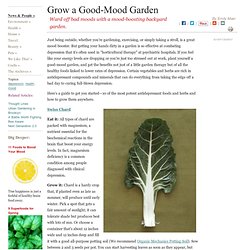

Growing Your Own Wheat. If you’re deep into gardening and self-sufficiency, sooner or later you’ll want to try growing wheat.

Among other benefits, it allows you to get away from the commercial process that grows a perfectly good grain, then scrapes off the bran, peels out the germ, bleaches the flour, and sells all those things back to you separately. If you try, you will discover wheat is easy to grow almost anywhere in the United States, even as a wide-row crop in your garden. One gardener in Vermont attests to having planted 30 pounds of winter wheat on one-eighth of an acre and harvesting 250 pounds of grain in July. On a somewhat smaller scale, even if you have a front yard that’s 20 feet by 50 feet, you could plant 6 pounds of wheat and harvest nearly 50 pounds of grain. Before you enthusiastically plan to put in enough wheat to make all your bread for the next year, start with a small trial area the first year.
Different Types of Wheat Planting Wheat Harvesting Grain Using a scythe.
Morning Routines to do. Ikarian Greek Food. How to Make Homemade Yogurt—No Plastic Tubs Required. Save money and reduce your dependence on plastic by with DIY yogurt!

Ultra-Pasteurized or Raw Milk? To me, ultra-pasteurized milk (sometimes labeled "UHT pasteurized") tastes a bit off and not great for making yogurt at home. If you can find just plain pasteurized milk, which is heated to lower temperatures for a shorter length of time than ultra-pasteurized milk, you'll probably enjoy your yogurt (and your milk) more.
I’m fortunate enough to be able to get whole, raw milk from grass-fed cows from a neighborhood farmer we know and trust. But much as I like the idea of raw yogurt, I really disliked the texture of the homemade yogurt I made from it. Making Future Batches. 7 Ways to to Eat Healthy for Less. Studies Reveal: Foods That Stop Prostate Cancer.
My 7 Favorite Paleo Foods. Olive Oil. How to Grow Asparagus. Asparagus is a perennial vegetable grown for its delicious young shoots.

Rich in B vitamins, vitamin C, calcium, and iron, asparagus is one of the first crops of spring harvest. Fresh-picked spears are far more tender and tasty than store-bought ones. Asparagus thrives in any area having winter ground freezes or dry seasons. The mild, wet regions of Florida and the Gulf Coast are about the only places where it’s difficult to grow. Planting Select and prepare your asparagus bed with care; this crop will occupy the same spot for 20 years or more.
Asparagus plants are monoecious—each individual plant is either male or female. Starting asparagus from 1-year-old crowns gives you a year’s head start over seed-grown plants. To plant asparagus crowns, dig trenches 12 inches wide and 6 inches deep (8 inches in sandy soil) down the center of the prepared bed. Go Green Using Tips From America's Top Organic Experts!
The Rainforest Garden: How to Grow Turmeric. I'm not sure why turmeric isn't more popular, considering that growing your own, Thai food and DIY projects are all the rage.

Curcuma longa is a tropical rhizome with an intriguing past that looks just as great in the garden as it tastes on the table. The whole plant is edible; the roots are boiled, dried and ground up to produce turmeric powder, the leaves make a wrap for steamed fish, and even the flowers can be eaten as an exotically beautiful vegetable, like lettuce with a kick.
10 Mood-Boosting Foods You Can Grow. Just being outside, whether you’re gardening, exercising, or simply taking a stroll, is a great mood booster.

But getting your hands dirty in a garden is so effective at combating depression that it’s often used in “horticultural therapy” at psychiatric hospitals. If you feel like your energy levels are dropping or you’re just too stressed out at work, plant yourself a good-mood garden, and get the benefits not just of a little garden therapy but of all the healthy foods linked to lower rates of depression. Certain vegetables and herbs are rich in antidepressant compounds and minerals that can do everything from taking the edge off a bad day to curing full-blown depression. Here’s a guide to get you started—10 of the most potent antidepressant foods and herbs and how to grow them anywhere.
Swiss Chard Eat it: All types of chard are packed with magnesium, a nutrient essential for the biochemical reactions in the brain that boost your energy levels. Photo: Rodale Inc.
Fairfield Green Food Guide — Your Local and Sustainable Food Destination. Our Stolen Future: Home. MSG - Fake Names used on packaging. YoungOnRawFood.com. 9 Superfoods for Spring. It's spring—time to go green, literally.

Take a stroll through the aisles of your local farmers' market, and you'll see stands covered in emerald green: think asparagus, spinach, scallions and early spring arugula. All that green is good for you too. Spring vegetables provide some of the highest levels of vitamin K, iron, and phytonutrients that ward off chronic diseases. Here nine nutritional powerhouses to load up on while the season, short though it is, lasts.
Obesogens. Want Healthy, Safe Seafood? Consult the Superfish List.